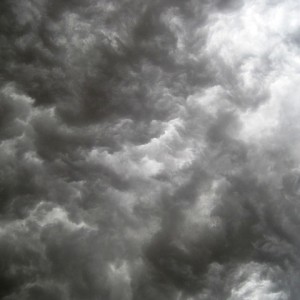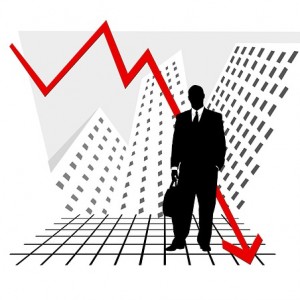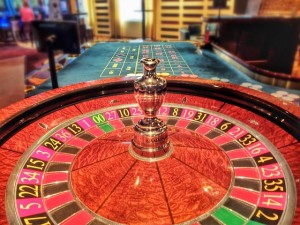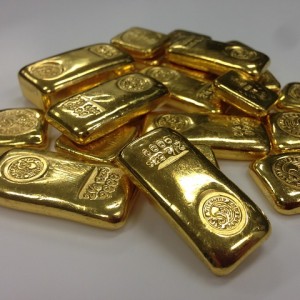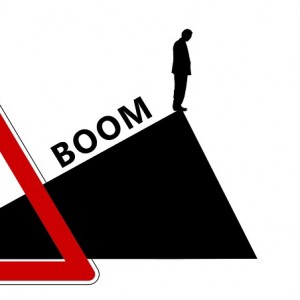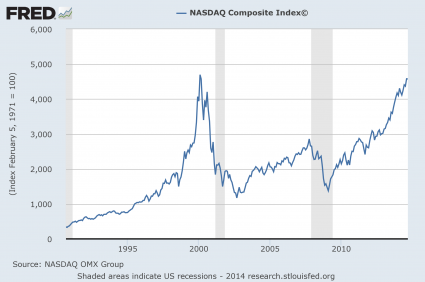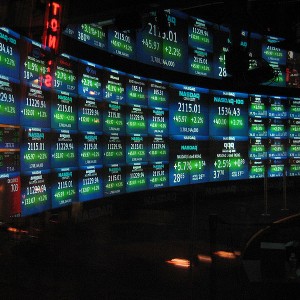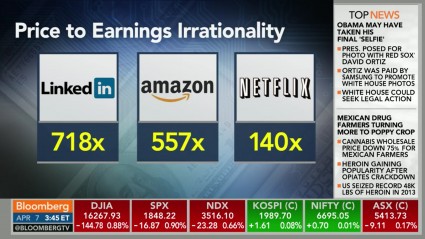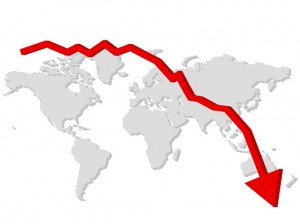 Is Ebola going to cause another of the massive October stock market crashes that Wall Street is famous for? At one point on Wednesday, the Dow was down a staggering 460 points. It ultimately closed down just 173 points, but this was the fifth day in a row that the Dow has declined. And of course Ebola is one of the primary things that is being blamed for this stunning stock market drop. Since September 19th, we have seen the S&P 500 fall about 7 percent and the Nasdaq fall nearly 10 percent. The VIX (the most important measure of volatility on Wall Street) shot up an astounding 22 percent on Wednesday. So many of the ominous signs for the markets that I wrote about on Tuesday are now even worse. If a handful of Ebola cases in the United States can cause this much panic in the financial world, what would a full-blown pandemic look like?
Is Ebola going to cause another of the massive October stock market crashes that Wall Street is famous for? At one point on Wednesday, the Dow was down a staggering 460 points. It ultimately closed down just 173 points, but this was the fifth day in a row that the Dow has declined. And of course Ebola is one of the primary things that is being blamed for this stunning stock market drop. Since September 19th, we have seen the S&P 500 fall about 7 percent and the Nasdaq fall nearly 10 percent. The VIX (the most important measure of volatility on Wall Street) shot up an astounding 22 percent on Wednesday. So many of the ominous signs for the markets that I wrote about on Tuesday are now even worse. If a handful of Ebola cases in the United States can cause this much panic in the financial world, what would a full-blown pandemic look like?
Of course Ebola is not the only reason why stocks are declining. Just look at what is happening over in Europe. The European Stoxx 600 index is already down a whopping 11.4 percent from the high that it hit just 18 days ago. That is officially considered to be “correction” territory.
And Greece experienced a full-blown stock market collapse on Wednesday…
As if the world didn’t have enough to be worried about (ISIS, Ebola, slowing China, Ukraine, slowing Germany, Fed tightening, etc.) now look what’s back: Greece. And in a big way.
The stock market is down over 9% on Wednesday, which is about as big as crashes come.
And the banks are getting absolutely smashed.
In general, markets tend to fall faster than they rise.
When there is a sudden downturn, the price action can be violent. And just like we saw back in 2008, financial stocks are leading the way. Just check out what happened to some of the biggest banks in America before the final bell sounded…
Volume leader Bank of America, down 5%, Citigroup, off 5.5%, and JP Morgan, down 4.6%, were particularly hard hit.
And thanks to Ebola fears, airline stocks plummeted as well…
Airline stocks were roiled by the prospects of curtailed travel due to the spreading Ebola virus. United Continental fell 4% and American Airlines was off 4.3%. Among tech stocks, Intel lost 3.3%. Apple fell 1.7% and Microsoft slipped 2.3%.
An increasing number of voices are concerned that we could be on the verge of a repeat of what happened back in 2008.
For example, Professor Steve Keen, the head of Economics, History & Politics at Kingston University in London, wrote the following in a piece for CNN entitled “Brace yourself for another financial crash“…
My acceleration indicator has been flagging that the stock market was due for a fall since mid-2013.
It’s a tribute to the power of the Fed’s Quantitative Easing that the market continued to defy the gravity of decelerating debt for so long. QE was really a program to inflate asset prices since, as my colleague Michael Hudson puts it, “the Fed’s helicopter money fell on Wall Street, not Main Street”.
But with QE being unwound, the stock market is now back under the control of the not so tender mercies of excessive private debt.
So welcome to the New Crisis — same as the Old Crisis. The roller coaster ride is likely to continue.
Others are even more pessimistic. For example, just check out what Daniel Ameduri of Future Money Trends recently told his readers…
“If it drops below 15,000 points I would suggest people start buying food and ammo, because this depression is about to turn nasty.”
However, keep in mind that not that much has really changed from a month or two ago.
Yes, we now have had three confirmed cases of Ebola in the United States, but this could be just the beginning.
At first, the fear of Ebola will be worse than the disease.
But if a worst-case scenario does develop in the United States where hundreds of thousands of people are getting the virus, the fear such a pandemic will create will be off the charts.
In the midst of a full-blown Ebola pandemic, we wouldn’t just be talking about a 10 percent, 20 percent or 30 percent stock market decline.
Rather, we would be talking about the greatest stock market collapse in the history of stock market collapses. In essence, there would not be much of a market at all at that point.
And if Ebola does start spreading wildly in this country, we would have a credit crunch that would make 2008 look like a Sunday picnic.
During times of extraordinary fear, financial institutions do not want to lend money to each other or to consumers. But our economy is entirely based on debt. If credit were to stop flowing, we would essentially not have an economy.
That is why we need to pray that this Ebola crisis stops here. But thanks to the incompetence of Barack Obama and the CDC, there has been a series of very grave errors in trying to contain this disease. This display of incompetence would be absolutely hilarious if we weren’t talking about a disease that could potentially kill millions of us.
Let us hope for the best, but let us also prepare for the worst. That means stocking up on the food and supplies that you will need to stay isolated for an extended period of time. As we have seen so many times in the past, basic essentials fly off of store shelves during any type of an emergency. During an extended Ebola pandemic, those essentials would be in very short supply and prices on the basics would absolutely skyrocket. Those that have taken the time to get prepared now will be way ahead of the game.
And if there were dozens or hundreds of people in your community that were contagious, you would definitely not want to go to a grocery store or anywhere else where large numbers of people circulate.
The key during any major pandemic is to keep yourself and your family isolated from the virus. This is basic common sense, but it is something that Barack Obama does not seem to understand. As I write this, he still has not done anything to restrict air travel between the United States and West Africa. Hopefully this very foolish decision will not result in scores of dead Americans.
